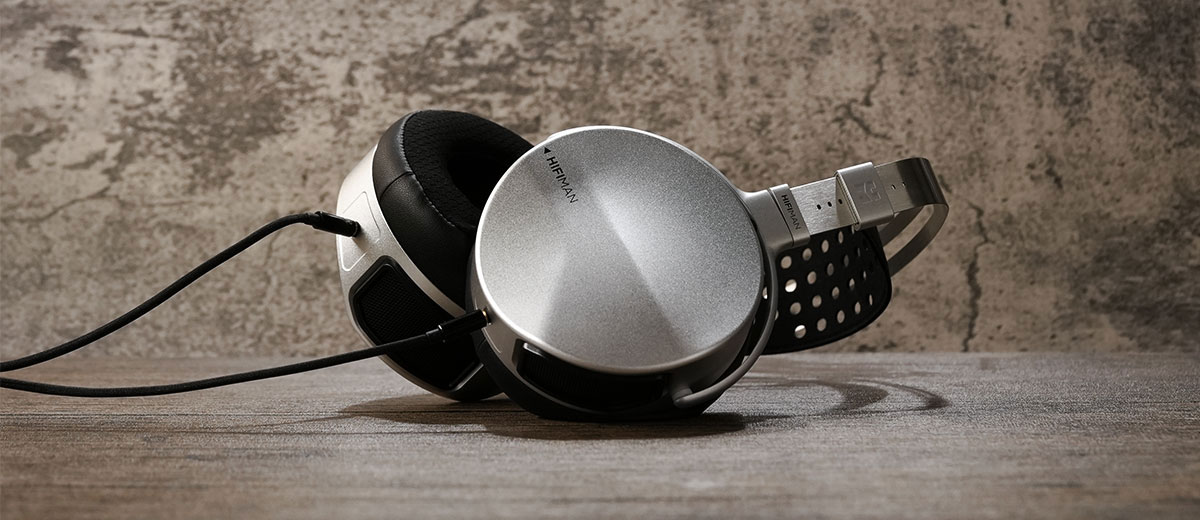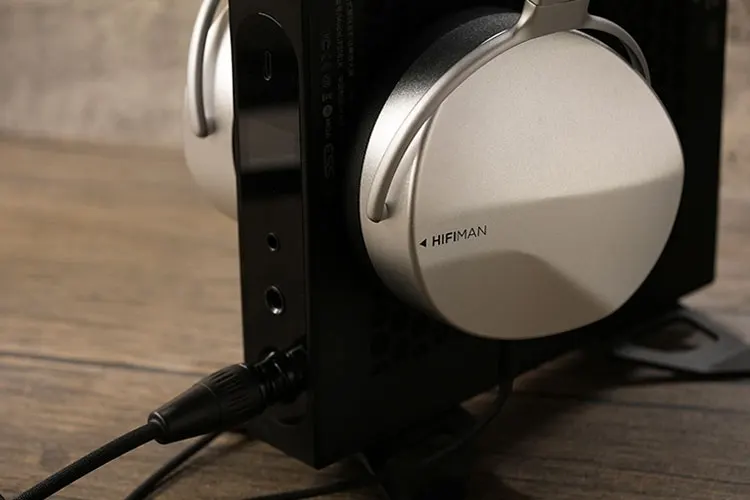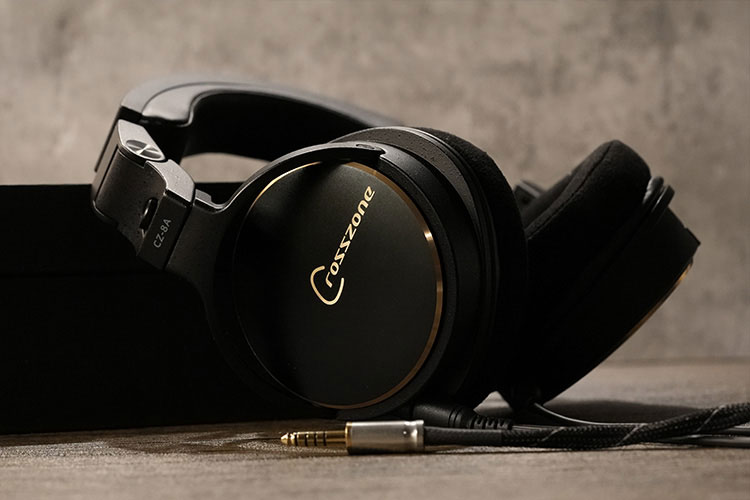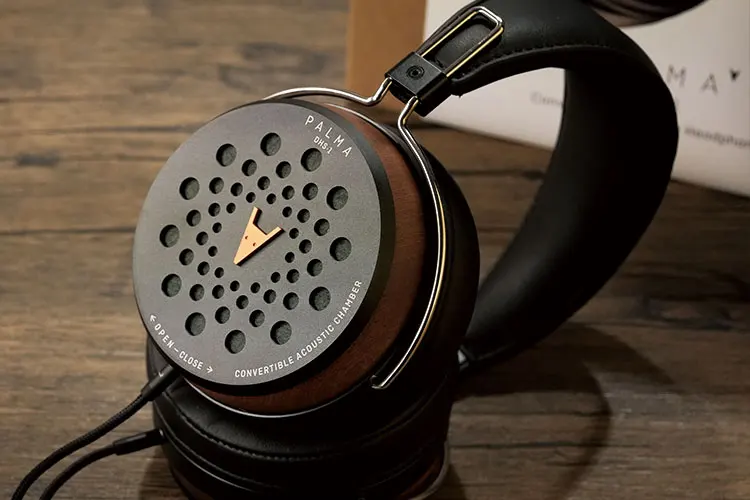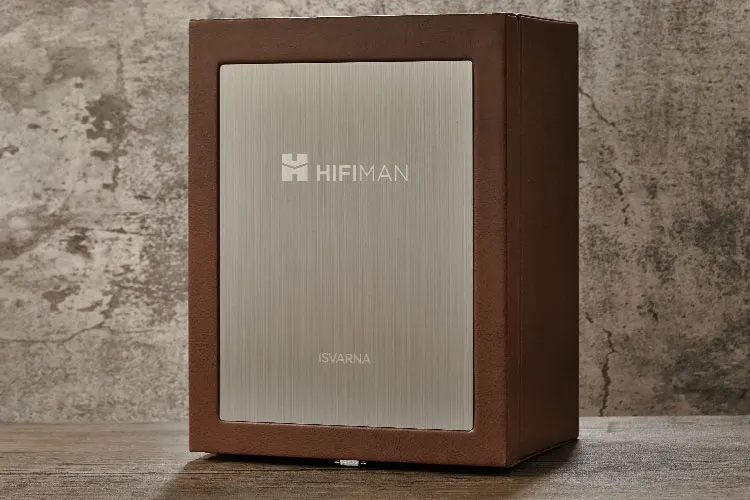Synergy
Efficiency
The ISVARNA features an impedance of 16Ω and a sensitivity of 93 dB/mW. While these specifications may not indicate high sensitivity on paper, in practical use, the headphones exhibit a rather dynamic output even when connected to less powerful sources.
This perceived response to power could be attributed to the dynamic driver inside, which tends to be more sensitive than a planar driver.
Additionally, the ISVARNA does not seem heavily damped, contributing to its lively sound profile. Any potential speed differences between the two drivers are not prominently noticeable during the test.
Across all the sources I tested, the ISVARNA maintains a clean background. In instances where the highest gain modes are used, there may be a faint hiss, although these are typically minimal during playback and do not significantly affect the overall listening experience.
Pairings
While the ISVARNA doesn’t demand much power to reach high volume levels, it benefits from good decoding and power for optimal control and dynamics. The absence of a 4.4mm cable suggests it should be powered on a desktop setup.
When paired with the EF500, the ISVARNA delivers a clean, open, and dynamic sound. The output feels fast and uplifting, despite the strong bass presence.
The mid-bass remains tight and dense, and the vocals are rendered smoothly with adequate separation, texture, and crispiness. There is good openness in this pairing, though the vocals could be more polished.
With the FiiO K19, the bass gains firmness and clarity, with enhanced layering and texture that helps boost detail. The treble exhibits more texture, while vocals become more distinct and powerful, with added vividness in the upper vocal frequencies.
The overall sound is more open and vibrant. The extra warmth on the ISVARNA balances well with the fast, neutral tuning of the K19.
On high gain, the ISVARNA may sound a bit sharp and compressed in the upper treble, adding excitement to some tracks but unforgiving with sharper voices and larger ensembles.
With the RME ADI-2 Pro, the vocal image becomes more precise. While the staging isn’t as expansive as with the K19, which gives the treble more brilliance, it feels more defined and natural, offering a stronger sense of control and texture, especially in the mid-bass.
The bass retains moderate depth with an airy quality, working harmoniously with the ISVARNA’s characteristics to produce a punchy, full-bodied, and textured response.
The mid-bass region gains density and firmness, allowing voices to cut through more clearly without overshadowing accompanying instruments, while the treble sounds more controlled in the sibilance zone compared to the FiiO K19 or EF500 but may not be as forward and energetic.
Select Comparisons
Crosszone CZ-8A Enhanced
The reason for choosing the CZ-8A Enhanced lies not only in its multi-driver configuration but also in its tuning approach that prioritizes natural low-end reproduction over traditional planar designs.
Technical
The Crosszone CZ-8A Enhanced is a special set of headphones with 3 drivers inside to simulate room acoustics. It uses Beryllium-plated drivers and its impedance is relatively high at 75Ω and its sensitivity rating at 100 dB/mW.
Design
The CZ-8A features a stunning paint job and intricate details within its elegant framework design. In contrast, the ISVARNA adopts a simpler and more futuristic design.
While the CZ-8A excels in terms of build quality, with exceptional craftsmanship and robust construction, the ISVARNA’s design is perceived as cooler and more contemporary with its sleek form factor.
Performance
Both headphones require substantial power to truly shine. The CZ-8A is more selective with its sources, while the ISVARNA pairs more effortlessly with less powerful outputs without sounding flattened or veiled.
On the CZ-8A, the lower end is nicely textured with a denser timbre, delivering a substantial punch in the sub-bass region. In contrast, the ISVARNA kicks deeper and maintains a cleaner bass response, characterized by an airy and well-defined decay that prevents the lower frequencies from feeling sluggish.
When handling slow, intricate acoustic tracks, the CZ-8A appears more expressive and full-bodied, aided by its fast beryllium drivers that enhance texture in the mids and upper frequencies. The ISVARNA, on the other hand, offers a cleaner sound with a speedier recovery, contributing to enhanced definition and perceived openness.
The ISVARNA’s midrange articulation is notably smoother, lending itself well to piano works and quartets. Voices are distinctly separated and precisely imaged, contrasting with the CZ-8A’s more dispersed and bolder yet immersive imaging.
This characteristic of the ISVARNA allows backing instruments to be more easily discerned, making it preferable for instrumental pieces and tracks featuring multiple singers.
In terms of staging, the CZ-8A tends to focus more toward the front, while the ISVARNA offers a wider lateral soundstage, albeit not as deep. The CZ-8A’s stage may feel less dynamic with larger groups and complex mixes due to its oval-shaped stage.
Overall, the ISVARNA delivers a higher definition and a more balanced tuning that accommodates various genres well. In contrast, the CZ-8A may sound more bloated and tilted towards the lower end, appealing to those seeking a dense, rich vocal performance akin to having the virtuoso right in front of them.
Despite its non-open-back design limiting the staging somewhat, the ISVARNA maintains a more natural tuning and versatility across genres.
PALMA DHS-1
Technical
The Palma DHS-1 from Spain has 50mm dynamic drivers down its hood and a special rotating shutter that powers its patented switching mechanism, allowing instant switching between open-back or closed-back modes.
In the opened mode the frequency response is as wide as 2-35000Hz as claimed by Palma, with a sensitivity rating of 109 dB/1mW and 32ohm in impedance which is a lot easier to drive on paper.
Design
The DHS-1 features a distinctive design that goes beyond its innovative switching mechanism, boasting premium materials that enhance its overall aesthetic.
The metallic components are meticulously machined and processed, offering a smooth texture that feels luxurious to the touch.
Additionally, the earpads are exceptionally soft, enhancing comfort during extended wear. However, a downside of the DHS-1’s design is its limited turning capability within the framework.
In comparison, headphones like the ISVARNA allow the earcups to move freely in multiple directions, offering greater flexibility and adaptability to different shapes/sizes of heads.
Performance
The ISVARNA, with its dual-driver configuration and newer planar technologies, holds an edge in technical prowess.
However, the DHS-1 also offers strengths such as a more impactful, solid mid-bass, a more uncolored midrange delivery, and greater ease of drivability with portable sources.
In testing with fast African drums, the ISVARNA exhibits comparable depth to the DHS-1 while delivering a slightly fuller punch, though not as deep as the DHS-1.
The ISVARNA’s fuller mid-lows enhance vocal prominence. Despite capturing a stronger impact and displaying a firmer attack, the ISVARNA’s bass response feels slower compared to the cleaner-tuned DHS-1.
The DHS-1’s faster low-end response allows consecutive bass impacts to be distinctly and dynamically presented without overly emphasizing decay.
The ISVARNA offers a more colored, richer, and vivid midrange contrasting with the DHS-1’s swift, uncolored approach that aims to eliminate coloration and presents vocal harmonics more clearly.
R&B, EDM, and other tracks that emphasize vocals or bass, as well as acoustic guitars, sound wetter, more intimate, and full-bodied on the ISVARNA.
This is in stark contrast to the DHS-1’s clean, unaltered, and revealing performance, which favors classical music or powerful, ethereal voices, as well as those who need to pick out more details from tracks for their editing work.
My Verdict
By incorporating a blend of planar and dynamic drivers, HIFIMAN skillfully strikes a good balance between technical prowess and dynamic energy, combining punchy, engaging bass with distortion-free, textured, and agile treble.
The addition of dynamic drivers contributes to easier drivability, a natural timbre, and a solid low-end punch, while also allowing better extension and imbuing the sound with greater expressiveness and warmth compared to conventional planar designs.
The crossover implementation is well-executed, resulting in a natural and immersive tuning that appeals to those who find pure planar designs too clinical or conservative in the low end.
Overall, the ISVARNA is a nice alternative for listeners seeking a blend of technical finesse and musical engagement, and it would be intriguing to see a future iteration of the ISVARNA that further pushes the boundaries of stage performance.
HIFIMAN ISVARNA Technical Specifications
- Frequency Response: : 6Hz – 60kHz
- Impedance:: 16Ω
- Sensitivity: 93 dB/mW
- Net Weight: 462g

